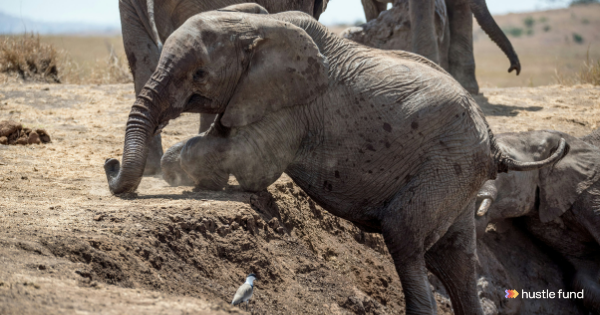How we launched our e-book and got to 10k downloads
The launch of our new book, Raise Millions, became one of the best marketing initiatives in Hustle Fund history.
In case you missed it, we wrote the ultimate guide to fundraising and gave it away at no charge. My original goal was to get to 1,700 total downloads. But here's what actually happened: :
- 24 hours: 3,120 downloads
- 48 hours: 5,109 downloads
- 72 hours: 6,279 downloads
As of February 6, 2024, we’re at 9,718 downloads (70% are people who are new to the Hustle Fund orbit). People shared the book with their communities without us even knowing. The book was semi-viral – every marketer’s dream!
But the accomplishment I’m most proud of was that we did this all while ignoring common marketing advice: $0 on paid ads, no A/B testing and no complicated funnels.
Pretty rad, eh?
Below I break down our entire marketing strategy, along with advice that you likely won’t see from online marketing gurus.
Build a product people want
No matter how stellar your marketing is, it won’t matter one bit if you build something that nobody wants.
A great product – e.g., a book, software, service – should solve the customers’ problems. In other words, it should be a solution. This applies to lead magnets, too. So before you start marketing, invest some time in understanding your customers’ pain points so you can build better products.
In our case, talking to founders has always been our highest priority. Here’s how:
- We’ve been writing our newsletter, The Founder Playbook, every week for over two years.
- We started “Asking for a hustler” where we answered readers’ questions every other week.
- We host webinars and live events for entrepreneurs year-round.
- We review 1,000 decks from early-stage founders seeking investment every month.
- The General Partners (and most of our team) have worked with startups of all shapes.
We knew our audience’s pain points like the back of our hands. So, writing a book on fundraising was a no-brainer.
If you’re completely new to talking to customers, I recommend you read The Mom Test (we are not affiliated. I just love this book.).
Create a landing page
Once you’ve built something people want, you need to clearly communicate how your product/service will benefit them via your landing page.

The “top of the fold” is the most important part of a landing page. This is what people first see when they visit your URL.
I had originally written a lot more copy, but my teammate and editor, Kera DeMars, reminded me to keep it simple.
- Headline: Explain the big benefit. This is like the antidote to the massive problem that your users have.
- Sub-headline: This provides just enough intrigue to convince people to get the book. I love the line, “And it’s 100% free.”
- Call to action: Our goal was to drive downloads. For you, it could be to book a call or demo the product.
I’m not going to analyze our entire landing page in this piece.
The key to landing pages is to keep users focused on the single CTA that is most important. For us, it was "get the book". No distractions, no other links to click. No nav bar inviting people to check out our "Careers" or "About" page."
Leverage your brand
Although we’re relatively new to the VC world, Hustle Fund has built a solid reputation for being helpful to founders. Two of our GPs, Eric Bahn and Elizabeth Yin, invested years into building audiences on Twitter and LinkedIn, making themselves subject matter experts on all things investing.
When you market new products inside an organization, it’s important to identify what assets that group has that you can leverage. For us, the big ones were:
- Elizabeth’s social media
- Eric’s social media
- Hustle Fund’s YouTube audience
- The Founder Playbook audience
- Friends of the company
For #s 1-2, I ghostwrote every tweet and LinkedIn post to make it easy for our team to share the book. You can see the final posts here, here, here, and here.
🔥 Social media tip: post the link to your landing page in the comments – not in the post – to make the Twitter/LinkedIn algorithm happy and get more eyeballs on your post.

For #3, I wrote the YouTube script for Eric and Janel, and provided the thumbnail and video description. They turned around the video within a week.

For #4, we sent an email to our newsletter audience on launch day. We wanted to provide value to all of your, and we asked you to forward the book to your founder friends.
.png)
And for #5… no, #5 deserves its own section.
Reaching out to influencers
We believed that this resource could be a huge benefit to the audiences of many of our friends. But those people are busy. So my goals were to:
- Show them the book would be valuable to their audiences
- Ask them for help
- Make it as easy for them as possible
Here's how I did this:
- I explained what the book was and why their audiences would love it
- I gave them an easy out if they didn't want to help
- On launch day, I sent them a link to the landing page and links to our team's social posts. This made it easy for them to re-share on social rather than coming up with the copy on their own.
This strategy worked. Ryan Hoover’s tweet brought in hundreds of new people. Dozens of other people shared the book on launch day. This spark created momentum that exposed the book to a much wider audience.
This may seem like a lot of writing and coordination, but that’s what good marketers do. Create a plan, do the work upfront, and make it stupid easy for others to help.
Other things we did
We have a #amplify Slack channel
.png)
Once Elizabeth and Eric posted, we shared the link to this Slack channel for our team to like, share, and comment. This further promoted the post and made the algorithm happy.
Respond to every comment
.png)
We responded to every comment people left. This showed appreciation to everyone who gave feedback, and also boosted the algorithm.
Launch on Product Hunt
We didn’t try hard to boost the Product Hunt listing, but it opened the door to a few dozen new people with little effort.
Giveaway (semi-fail)
We did a giveaway to incentivize people to share the book. It wasn’t that well received. Perhaps it was because it was a Friday night… or maybe the new audience didn’t know what a “hippocorn” was.
Post behind the scenes
.png)
We were constantly sharing updates about how the launch was going and what people were saying. Here’s an example. I even posted an update about adding a copyright page after someone published the PDF without our consent.
These kinds of posts keep the momentum alive.
To sum it all up
This analysis isn’t like most articles out there measuring click rates, landing page conversions, or A/B tests.
Making a product that people really want is hard. Communicating clearly is hard. Building a solid reputation is hard. Orchestrating all the moving pieces… that’s actually the easiest part.
Thank you to everyone who shared the book. It means the world to us. And if you’ve read this far and haven’t picked it up yet, here’s your chance.











